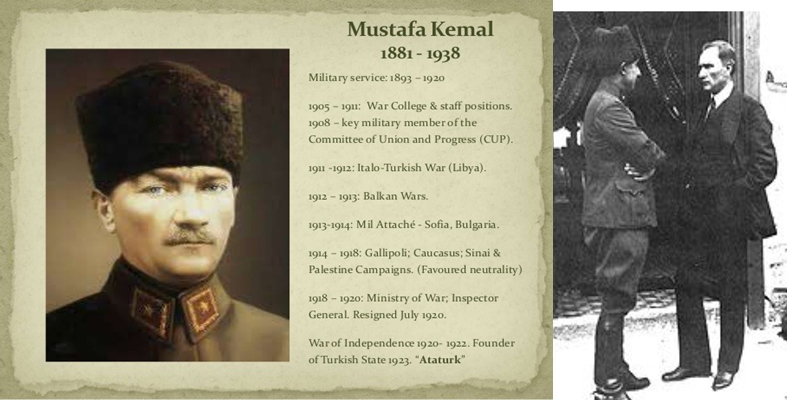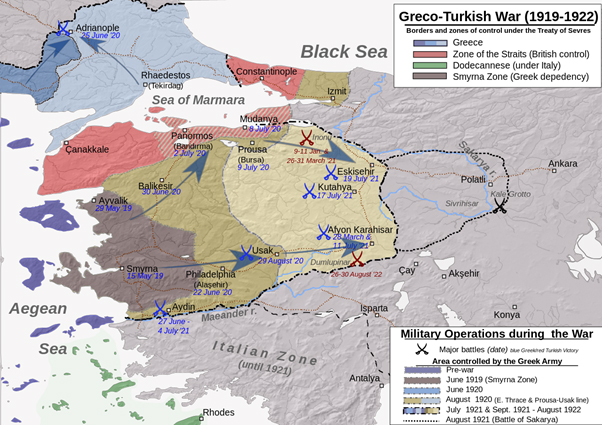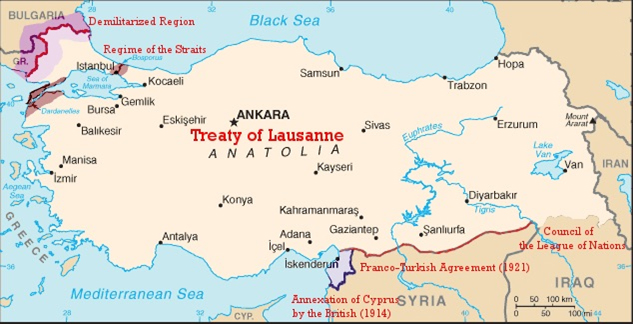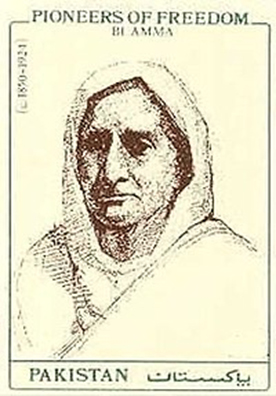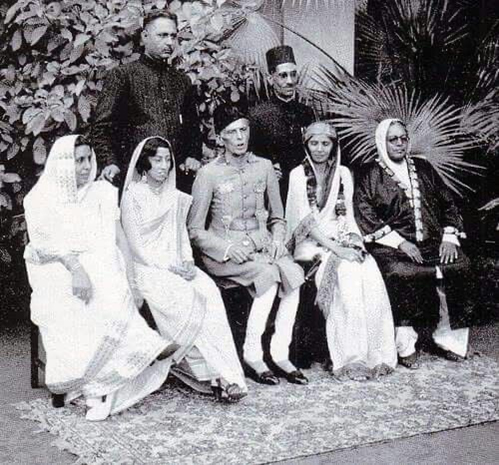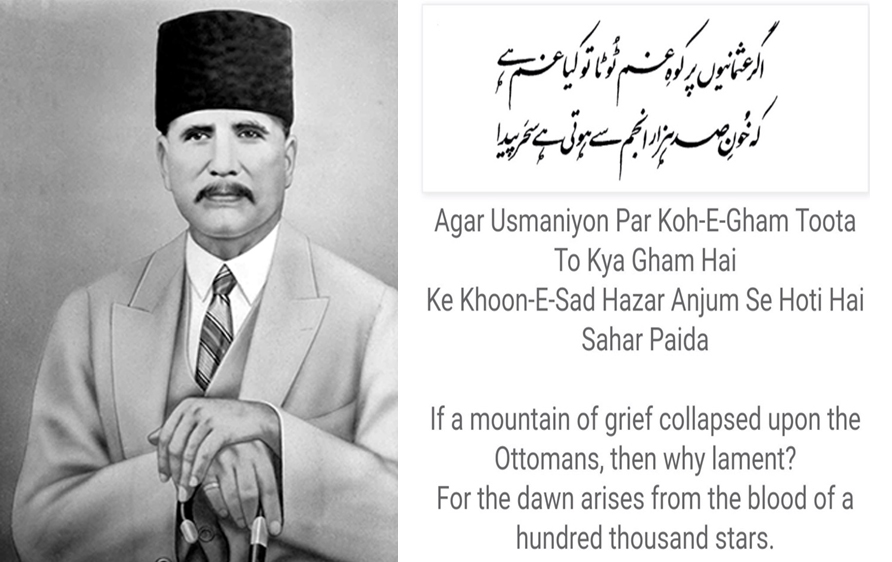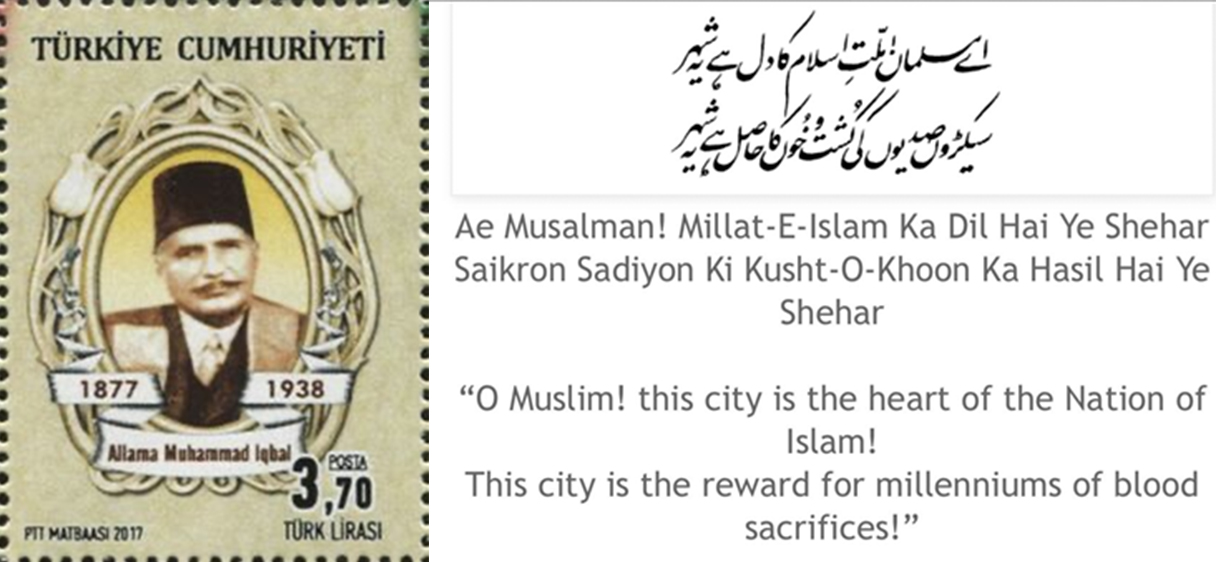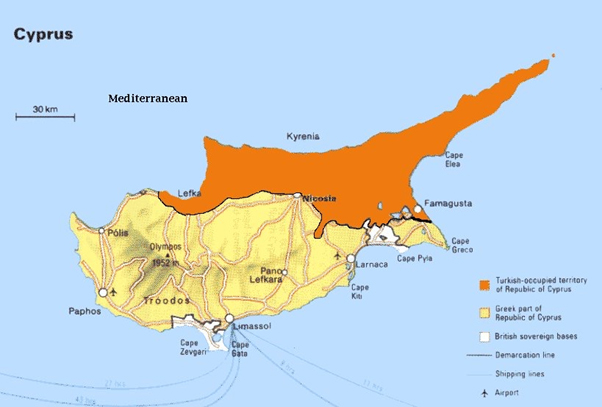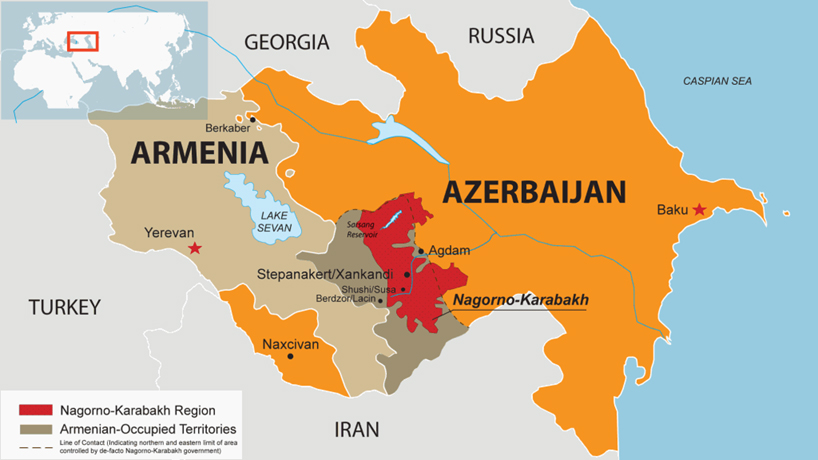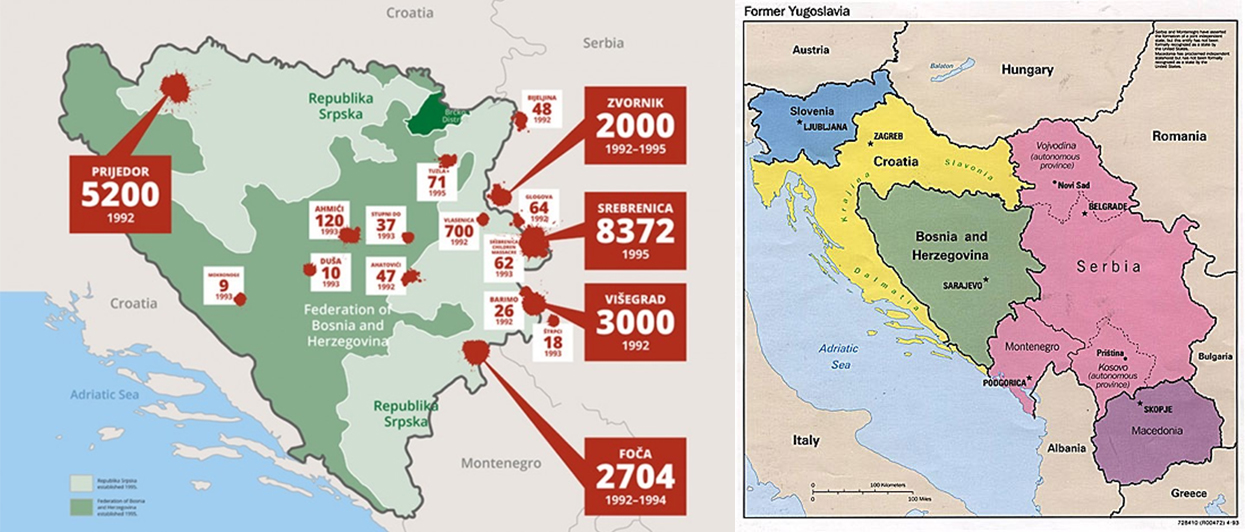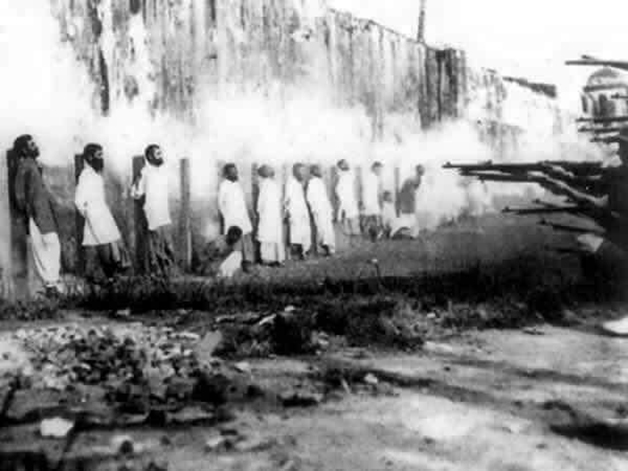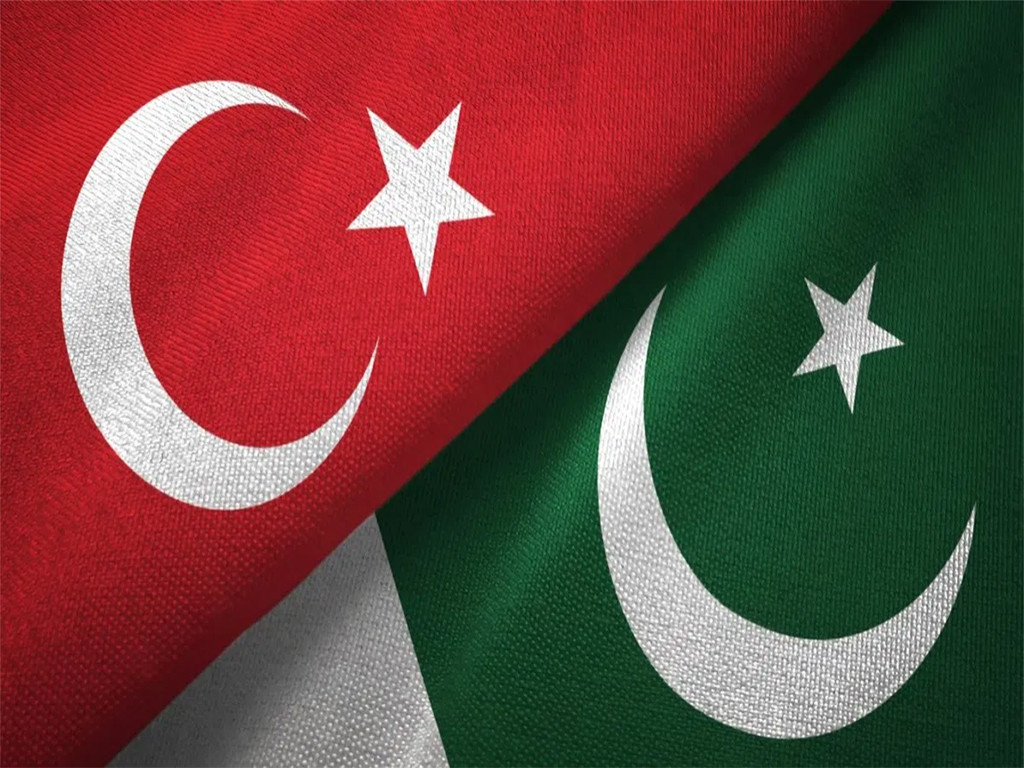
Pakistan’s consulate general Dr Yousuf Junaid’s interview with Turkey’s TVNET
The general impression among Pakistanis is that, the gracious attitude of ordinary Turks towards Pakistanis, be it a complimentary ‘Chai’ in a turkish restaurant or an offer of a seat at a tourist shop, may simply be due to Turkey and Pakistan being fellow muslim nations. Often, this surprising hospitality is attributed to the historical Turkic roots of our past empires and languages. With Turkey emerging as a republic after the fall of the Ottoman Empire and a fight against colonial powers, and Pakistan emerging as a republic after fall of the Mughal Empire and the colonization by British imperialists. I’ve often heard from Turkish friends that history lessons in the Turkish school system teach their students about historical friendship between the people of Pakistan and the Turks. Unfortunately, Pakistani elementary syllabus contains no such lessons, therefore references associated with this fraternal bond carry an element of humbling curiosity for us.
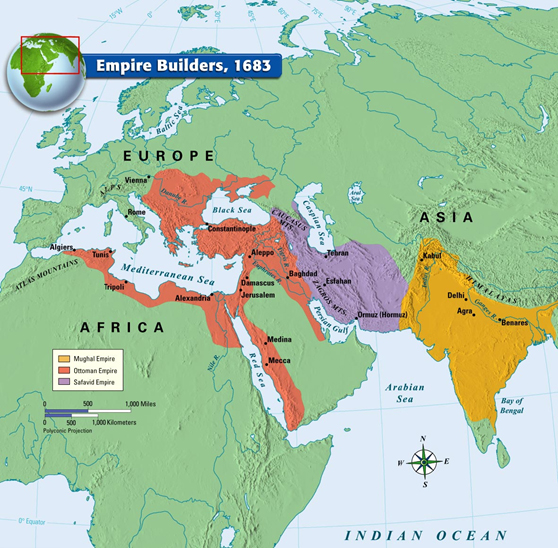
The Mughal Empire and the Ottoman Empire at their peak in 1683
Be it Turkish support to Pakistan when it comes to the Kashmir dispute or other international issues, Pakistanis are well aware of the fact that, Turkey goes out of its way to stand by Pakistan. But to understand this bond of brotherhood, and how it developed over a period of a hundred years we need to take a deeper look at the instances in our own history, when Pakistanis as a people went out of our way to stand by the Turks. Since it is our history, it is important that our younger generations must never be allowed to forget these golden deeds, which keep on bringing our way, the love and deference of our Turkish brothers. To serve this purpose, let’s take a deeper view into the origins of the Turkey Pakistan Brotherhood.1. Khilafat Movement And Turkish War of Independence:
Khilafat Movement was established after allied victory at the end of the first world war, when Muslim leaders of British India, who would go on to lay the foundations of the Pakistan Movement belonging to All India Muslim League, and a few from the Indian National Congress, joined forces to help the Turks. They not only lobbied the British government against abolition of the Ottoman Caliphate, but also raised funds for Turkish forces to fight allied imperial powers in a war of independence under leadership of Mustafa Kemal Ataturk.People of Turkey are relatively well versed in the history of the Turkish war of independence and the eventual abolition of Ottoman Caliphate. It is understandable for them to realize the significance of the Khilafat Movement towards their struggle for an independent Turkish Republic, however Pakistanis tend to misunderstand the Khilafat Movement as an effort to help the last Ottoman Caliph hold onto power, after the loss of the Central Powers in the Great War. Hence, it is important to look at the historical context in which the Khilafat Movement was initiated, and how it sought to influence the turn of events in Ottoman Turkey.
Pakistan’s founding fathers living under a colonial British empire after centuries of Muslim rule in India, carried an emotional burden of a progressive loss of an empire and ultimate subjugation to a foreign colonial power. They had a clear realization that the fall of Mughal empire was not the result of a single clash with hegemonic powers, rather it was a slow and steady decline spanning over a hundred years against deviously clever policies of western imperialism. Bengal was lost at the battle of Plassey in 1757, Bihar and Oudh was lost at the battle of Buxar in 1764, Mysore was lost at the Anglo Mysore war in 1799, Sindh was lost at the battle of Miani in 1843, Punjab was lost at the Anglo Sikh war in 1849, and British crown finally imposed direct control over Mughal India by deposing the last Mughal Emperor Bahadur Shah Zafar in 1857.

100 year colonization of Mughal Empire 1757-1857
Therefore, Indian Muslim intellectuals could clearly identify with a similar fall of the Ottoman Empire, that was not a result of defeat in the first world war, rather it was also a result of gradual decline forced by a series of intermittent wars and treaties with the western powers. Crimea was lost in the Russo-Turkish War in 1774, Algeria and Tunisia were lost to the French in 1830 and 1881 respectively, Greece was lost to Britain, France and Russia at the London Protocol in 1829, Balkans and Romania were lost at the treaty of San Stefano in 1878, Egypt was lost to the British in 1882, Libya was lost in Turco-Italian war of 1912, and finally the allied western powers descended on the shores of Gallipoli to inflict a fatal blow upon the remnants of the once mighty Ottoman Empire.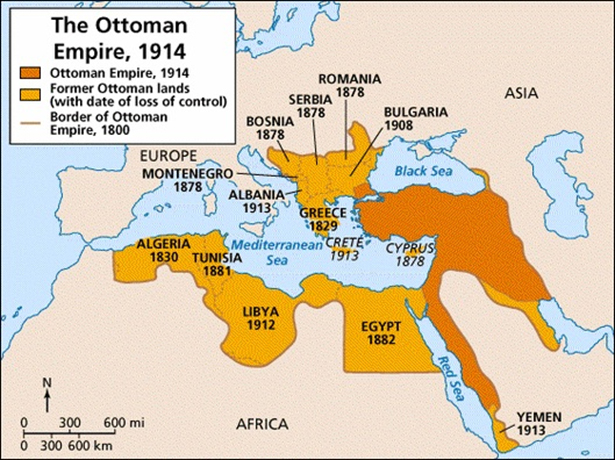
Loss of Ottoman territories up till 1914
Ottoman Empire was not only a Turkish empire, it was also an Islamic empire that had been bearing the Islamic flag of Caliphate for centuries. After Abbasid empire had been decimated by the Mongols, Umayyad empire had being destroyed by the Spanish Reconquesta, Central Asian Muslim states had been conquered by Russian armies, and Mughal India had been colonized by the British, it was only the Ottoman Empire that was left standing as the sole Muslim power in 1914. In the First World War, Turks were not only defending their Anatolian homeland, but were also defending the Caucasus, Mesopotamia, Hejaz and holy lands, as well as Palestine. Ottomans didn't expect concrete military or financial help from any of the poorer muslim backwater lands, however the Caliph still yearned for collective support of the Ummah, and it was in this hope that he declared a global jihad against colonial powers three weeks after start of the Great War. The response to this call for jihad was a deafening silence across the Muslim world. Moroccans, Algerians, Tunisians,and Libyans couldn't help due to being chained in colonialism. Egyptians and Iranians were forced to collaborate with western allies against the Turks, and Arabs of Hejaz committed the ultimate betrayal, by rising in revolt against their own Caliph under the leadership of Sharif of Makkah.It was just the Turks against the world, and the Turks felt disheartened & disillusioned with this lack of support, and Turkish national memory has been traumatized by the betrayal of fellow Muslims in a brutal war of survival, against the full might of non-muslim western powers. It was in these dark times that Shaukat Ali and Mohammad Ali Johar published an article in the Urdu weekly ‘Hamdard’ and English weekly ‘Comrade’ saying the Turks were justified in their fight against the British. They were subsequently blamed for being linked to the ‘Silk Letter Conspiracy,’ involving a plan to provoke rebellion against the British Indian government and to help the Ottoman war effort. “In these circumstances it was not surprising that the Ali brothers were interned in May 1915.” 1
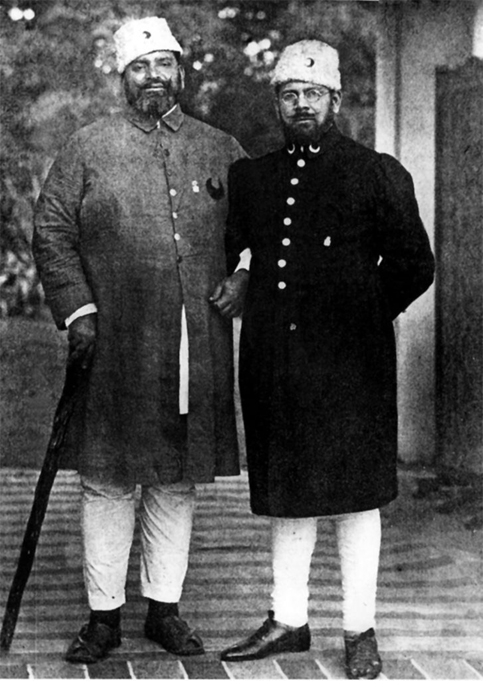
Shaukat Ali (left) and his brother Mohammad Ali Johar (right)
Ali brothers had begun their careers in fundraising by running fundraising campaigns during the Aligarh Movement, to grant university status to the Aligarh College founded by Sir Syed Ahmed Khan. They then, used these valuable experiences to raise funds for the Ottoman Turkish Wars even before the First World War, “during the Tripolitan War and the Balkan War in 1911-1912, Ali brothers devoted a large part of their seemingly boundless energies to collecting subscriptions for Turkic relief and for Red Crescent Medical Mission to aid wounded,” and “ Aligarh students contributed generously to the Turkish Relief Fund and several students went to Turkey with the Red Crescent Mission in 1912.” 2In “surveying Muslim reactions in India in those years preceding World War One, we may discern three main groups. First the westernized middle class influenced by the Aligarh tradition, men like Ali brothers, Dr Ansari, and Hakim Ajmal Khan who grew disillusioned with the setbacks of preceding years, lost faith in British intentions and sought compensation in a feeling of Islamic solidarity. These were the men who came to the fore in the Muslim League after the Agha Khan had resigned as its president.. They became potential allies of the second group the Ulema, led by men like Abdul Bari and Mahmudul Hassan.. Both groups by their anti British feeling were drawn towards the third group: westernized Muslims whose outlook was not communal, but national and secular, and who sided with the Congress. About 1910 the leadership of this group had fallen to Jinnah,” and “in 1913 Mohammad Ali Jinnah met Muhammad Ali Johar and Sayyid Wazir Hassan in London and he was persuaded to join the Muslim League.” 3

Khilafat Movement’s Green Robed Fundraising Volunteers
The Khilafat Movement was established by the muslim leadership of India, at the end of the war in 1919 to help Turkish government survive the fallout of Allied victory, and loss of support from other Central powers who had surrendered at the Treaty of Versailles on 28 June 1919.Despite the fact that, the Ottomans had successfully defended Constantinople against a combined allied military attack called the Gallipoli Campaign, under the brilliant leadership of Colonel Mustafa Kemal commanding Ottoman 5th Army positioned at Canakkale.4 It is also important to note that the Khilafat Movement was primarily led by leaders of the Muslim League such as Mohammad Ali Johar and Shaukat Ali with their crowd gathering and fund raising abilities, and Allama Mohammad Iqbal with his philosophical inspirations who went on to campaign for the Pakistan Movement, and they were greatly aided in this cause by Seth Jan Mohamad Chotani who served as the President of Khilafat Conference, as well as the key banker who managed all Khilafat funds. Although Congress leader Maulana Abul Kalam Azad sincerely served the Khilafat Movement in his personal capacity, the Indian National Congress only offered their support as a way to gain grassroots support for ‘Swarag,’ and Gandhi’s Non-Cooperation Movement against British rule. However, after a flimsily excuse of violence at the Chauri Chaura incident near Gorakhpur on February 5th 1922, Gandhi withdrew Congress support from the Khilafat Movement. 5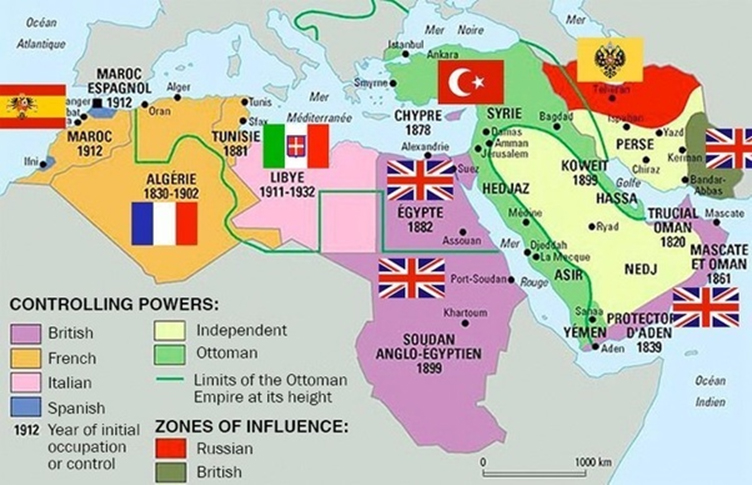
Ottoman Empire at the start of First World War
A common misconception is that the Khilafat Movement was a campaign to help the Ottoman Caliph hold onto power, which it certainly was not. Especially since, most political powers had already been transferred from the Ottoman Sultan to a parliamentary government of the ‘Young Turk’ led political party called ‘Committee of Union and Progress’ CUP, after the Young Turk Revolution for a constitutional government in 1908. But after assuming power “the CUP decided to leave Sultan Abdul Hamid II on the throne. He was revered by the Ottoman masses as both their sultan as well as the caliph and spiritual head of the Muslim world. Deposing Abdul Hamid might have generated more problems than benefits for the Young Turks in 1908. Moreover, the CUP’s leaders were mostly junior officers and low ranking bureaucrats in their late twenties and thirties, they lacked the confidence to assume all power into their own hands. Instead, they left the exercise of government to the grand vizier (prime minister) Said Pasha, and his cabinet and took the role of an oversight committee to ensure the sultan and his government upheld the constitution.” 6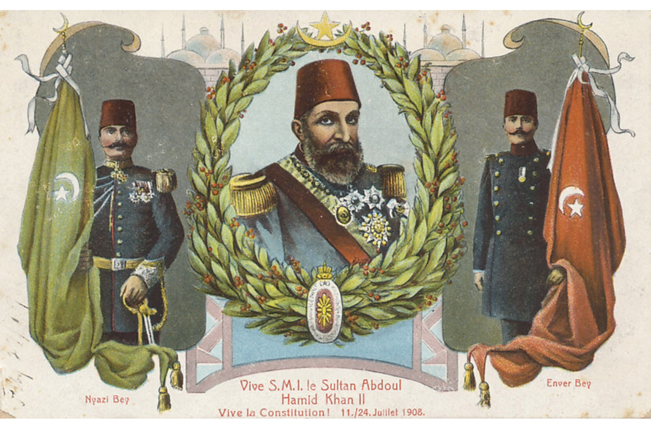
Consequently, on 24 April 1909 fearing a counter revolution by an autocratic Caliph Abdul Hamid II, the Young Turk led ‘Action Army’ under a charismatic officer Major Ahmed Niyazi imposed martial law in Istanbul, “the two chambers of the Ottoman Parliament reconvened as the Grand National Assembly, and on 27 April 1909 voted to depose Sultan Abdul Hamid II and to install his younger brother Mehmed Resad as Sultan Mehmed V.” 7 This effectively took all political powers away from the Caliph and transferred them to the Young Turk government under leadership of a triumvirate of Enver Pasha, Jemal Pasha and Talat Pasha
The Ottomans fought the Balkans wars of 1912 under a government of the Young Turks. Funds were still being sent by Mohammad Ali Johar collected with his own grassroot efforts, directly to the CUP government through various Turkish organizations, and not to the Ottoman Sultan in Istanbul. It shows that the anti war Khilafat Movement led by the Ali brothers, was waged just as much to help the Turkish nation retain independence in the event of a loss to the western powers, as it was to lobby the British Crown against abolishing the institution of Khilafat. These efforts were a result of the personal initiative of the Ali brothers, and a product of their elaborate social and political network. At the the end of First World War when the Ottoman Empire faced dismemberment and defeat away from Anatolia on various fronts, this fundraising campaign already being run the Ali brothers gradually transformed into the Khilafat Movement.
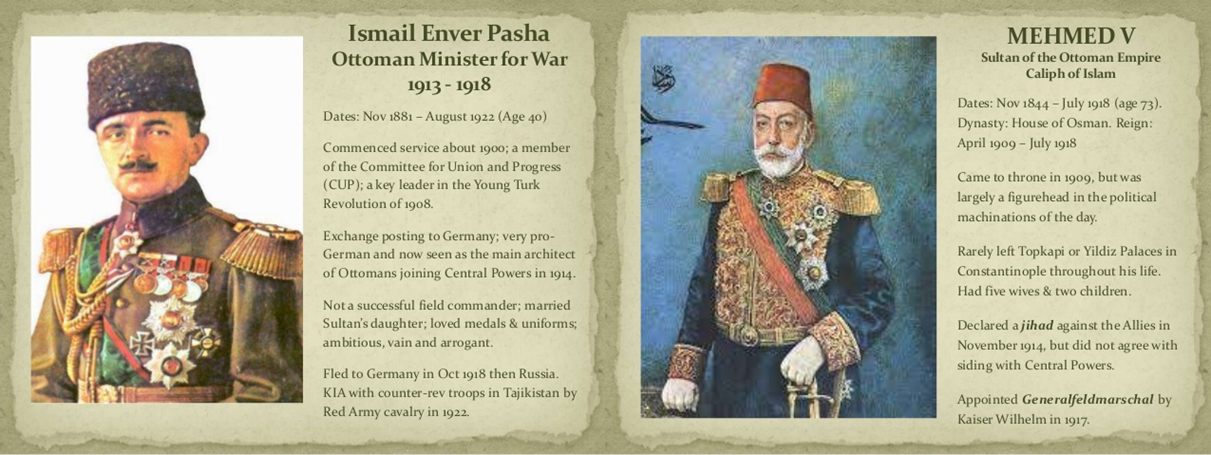
The Ottoman Sultan Mehmet V died during the last days of the First World War in 1918, and his cousin Mehmet VI rose to the throne, however the Ottoman government remained with the CUP triumvirate of Young Turks who tried their best to retain as many Ottoman territories as possible till the end of the war. But, when Talat Pasha the grand vizier realized on 13 October 1918 that the war was no longer winnable he along with the triumvirate resigned, and sent a captured British General Charles Townsend to the allies to seek terms on an armistice. The Armistice of Mudros was concluded on 30 October 1918 ending hostilities the next day, between the Ottoman Empire and the Allied powers ending the Great War. 8
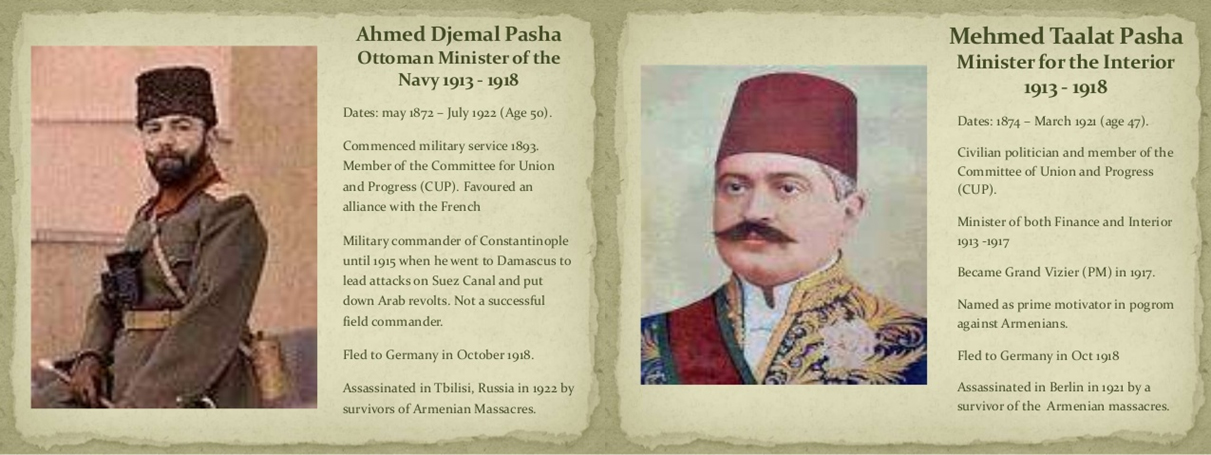
As soon as the armistice was signed on 1 November 1918, the Young Turk leadership boarded a German naval vessel in the middle of the night and escaped away from Ottoman lands. The triumvirate of Talat, Enver, Jemal accompanied by four of their closest advisers made their way to Berlin, where they received asylum from German allies. It was then that the Ottoman Sultan assumed a new found political power, and he appointed a new administration. However, the Ottoman military power had also evaporated overnight, leading to disillusionment and discontent across the Ottoman domains. On 13 November 1918, allied navies descended on the Ottoman capital. Forty two vessels led by the British dreadnought HMS Agamemnon led the fleet of French, Italian and Greek warships. Admiral Somerset Calthorpe and his officers triumphantly disembarked onto the streets of Istanbul, and began taking possession of the city without any resistance from the hapless Ottoman spectators.9 The capital city was to be administered by the British, meanwhile the Italian naval forces landed in Antalya, taking over administration of southern Anatolian cities, the Greek forces took over Izmir and surrounding towns, and French took over administration of the towns around Adana.
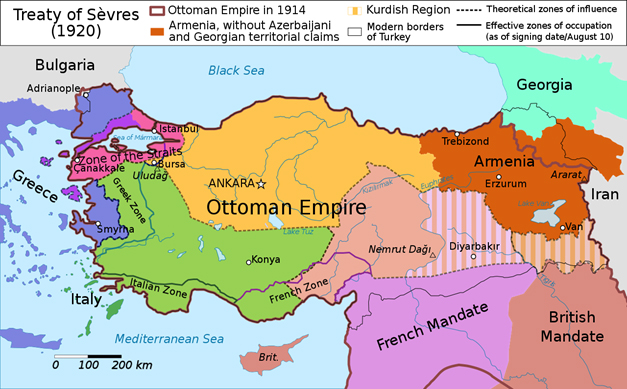
Mustafa Kemal Ataturk in one of his last wartime appointments, was assigned to the command of the Ottoman Seventh Army in Palestine in July of 1918. By September of 1918 he was serving as one of the few successful generals leading the Ottoman army in engagements across Transjordan. According to Lord Kinross, ‘Ataturk was the only Turkish General in the Great War who never suffered a defeat.’ 10
A day after the signing of the armistice Ataturk was appointed to the command of the Yildirim Army Group in Transjordan, replacing the German military advisor Otto Liman Von Sanders who was recalled by Germany as war had ended. Soon thereafter, Yildirim Army Group was also dissolved and Ataturk returned to an occupied Constantinople on 13 November 1918. Horrified to see the allied armies roaming around the capital of the Ottoman Empire, he would have wondered how the Turks had lost on the negotiating table, what they had won on the battlefield in Canakkale. As the Young Turk CUP government had collapsed, and the administration of the government had been resumed by the Caliph Mehmed the VI. Ataturk was assigned a desk job at the Ministry of War (Harbiye Nezareti) in Istanbul. As the Sultan had regained direct rule, the survival of his rule began to be his immediate concern, he began negotiating a treaty that would sanction his own position amid foreign occupation. With the signing of the Treaty of Sevres in 1920, and a disastrous agreement partition to the Anatolian homeland of the Turks, it’s easy to note that he had already resigned himself to the collapse of the Ottoman Empire. Vestiges of the Young Turks were resentful of this capitulation, but in the absence of any leadership, the loss of Turkish independence seemed to have been a foregone conclusion.
In was in these dark times that, on 30 April 1919 the Sultan’s government appointed Ataturk as the inspector of the remnants of the Ninth Army, and he was sent to Anatolia to effectively demobilize the remaining Ottoman military units, and reorganize them as internal security policing units answerable to the Sultan. In the life of Mustafa Kemal Ataturk this was a watershed moment, either he was going to follow his orders and let the Turks fall into a life of colonial submission, or he was going to risk his life and challenge the whole world, including his own Sultan. History would have it that he chose the later option. On 19 May 1919, he dramatically arrived in the Anatolian town of Samsun, and began a campaign of organized national resistance, to evict all occupying allied forces from the Turkish homeland.
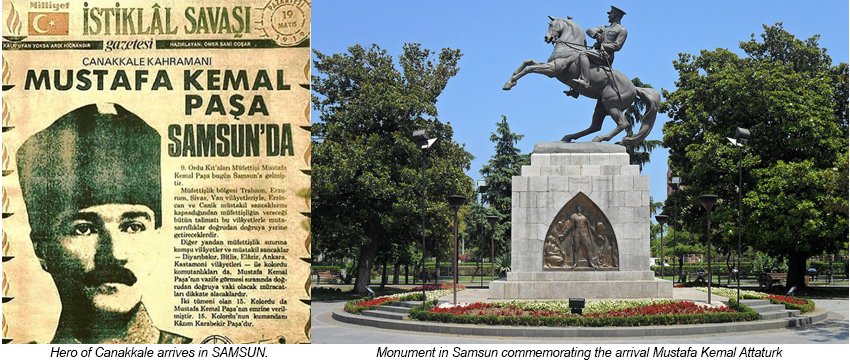
In June 1919 he issued the Amasya Circular, that publicly declared his intentions to lead a movement of Turkish independence. This resulted in his warrant for arrest being issued by his own Ottoman government in July 1919, and he was condemned to death for calling for the independence of his own homeland by the government of the Ottoman Caliph, to gain approval of occupying colonial powers. Disregarding Constantinople’s orders, Ataturk proceeded to assemble a national congress of Turks in Sivas, and issued the Misak-i-Milli a “National Pact” of resistance to foreign occupation. The congress appointed him as the head of its executive committee, making him the official leader of the Turkish resistance based in Ankara. Meanwhile, in December 1919 the Sultan held elections to the Ottoman parliament based in Constantinople, as a way to legitimize his own rule and gain public support.
However, the elections resulted in a clear majority for “Anadolu ve Rumeli Müdafaa-i-Hukuk Cemiyeti” political group headed by Ataturk, who himself remained away in Ankara. When this parliament was called into session by the Sultan, it quickly adopted the Misak-i-Milli declaration of Ataturk as national policy. This proved to be a serious blow to the rule of the Sultan, and a threat to allied occupation, therefore on 18 March 1920 British forces went into action and dissolved the Ottoman Parliament. In response, Ataturk called for a national election and the establishment of a ‘Grand National Assembly’ to be based in Ankara. On 23 April 1920, a new Turkish parliament called ‘Grand National Assembly’ GNA opened in Ankara, and elected Ataturk as the first speaker of the assembly.
Meanwhile, an increasingly weakened Ottoman Caliph hastily concluded treaty negotiations with the allied powers, and on 10 August 1920 his Grand Vizier Damat Ferid Pasha signed the Treaty of Sevres on Sultan’s behalf. The treaty officially called for partition of the Ottoman lands, and even sanctioned direct foreign occupation of the Anatolian Turkish heartland. This proved to be the ultimate act of treachery by the Ottoman Caliph himself against Turkish independence, and resulted in Ataturk convincing the GNA to come together, and mobilize ‘Kuva-yi Milliye’ a Turkish National Army based in Central Anatolia. They would now have to fight the ‘Kuva-yi Inzibatiye’ the Ottoman Caliph’s Royal Guards, supported by the Greeks in Western Anatolia, the Armenians in Eastern Anatolia, the French in Southern Anatolia, and the British and Italians in Constantinople.
